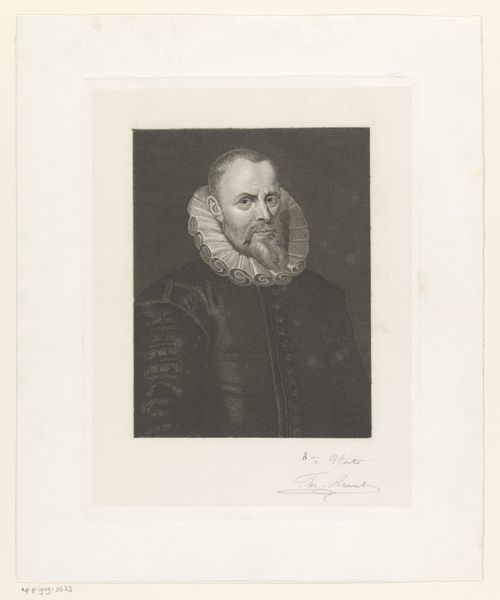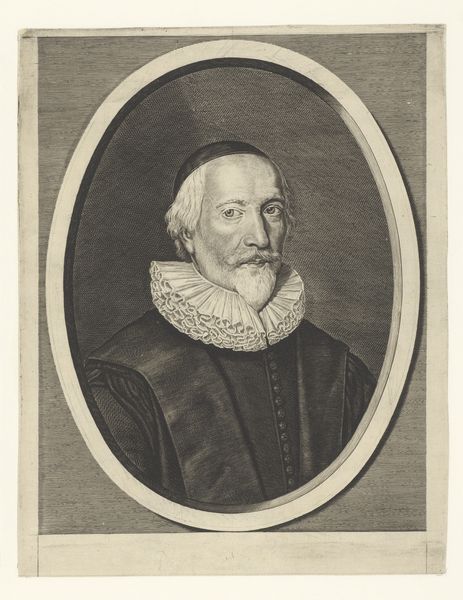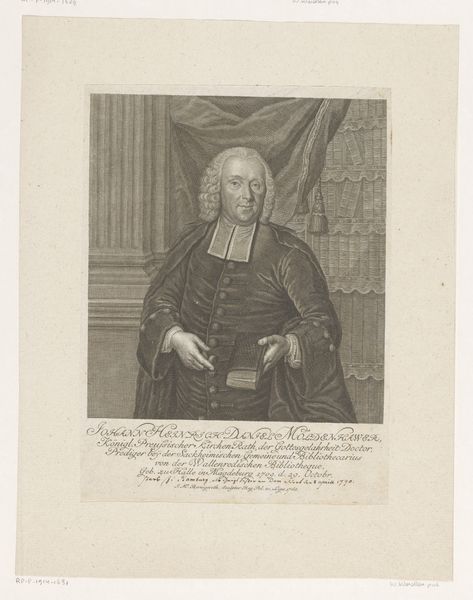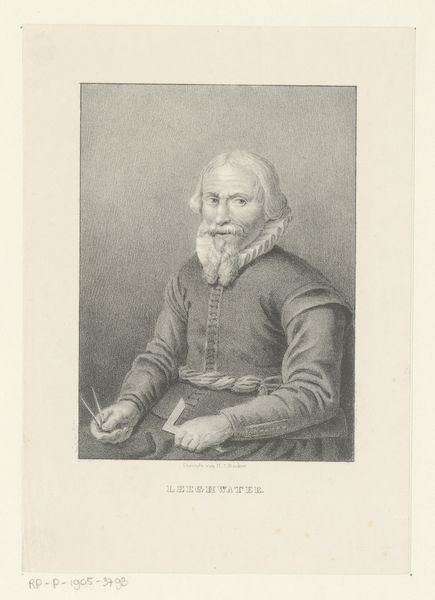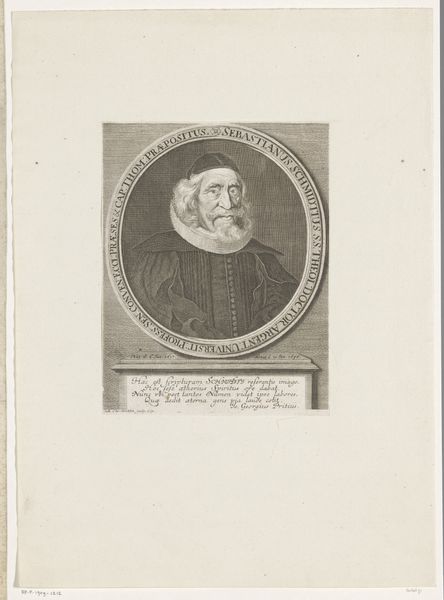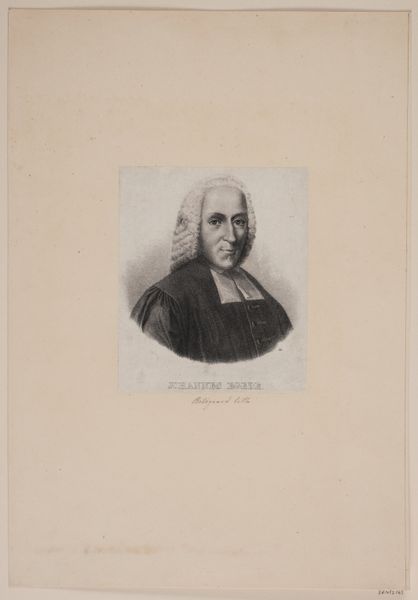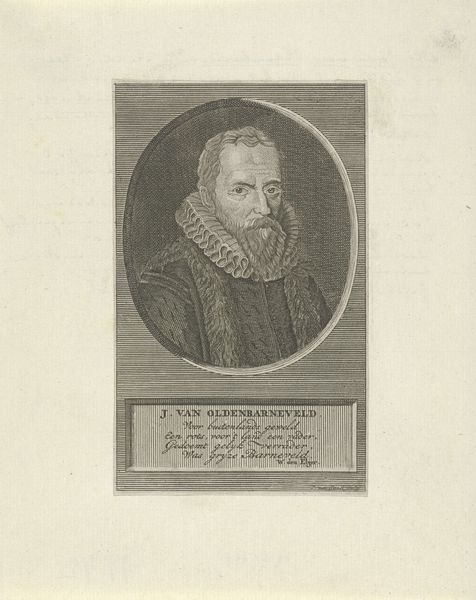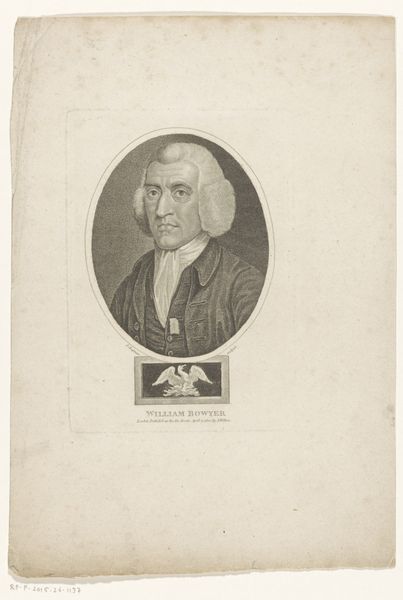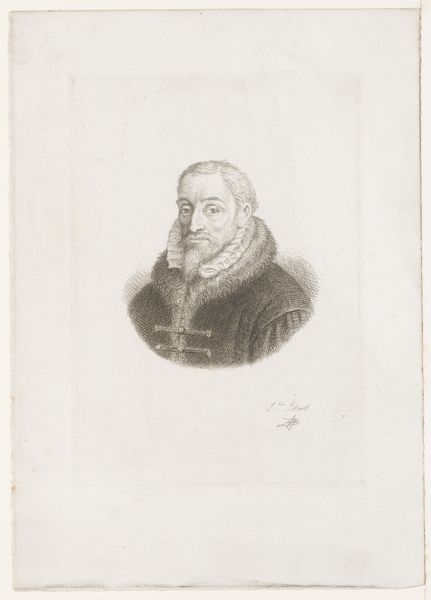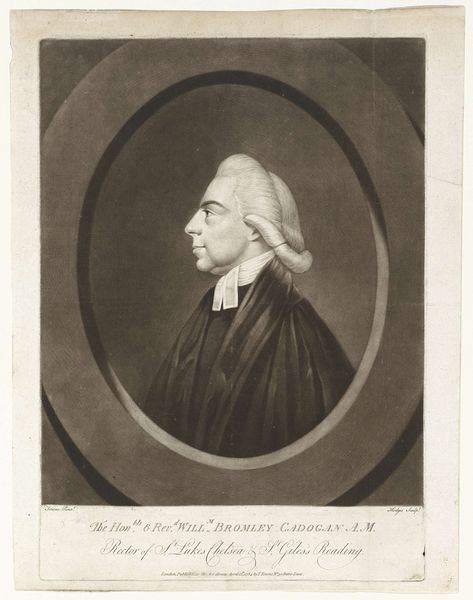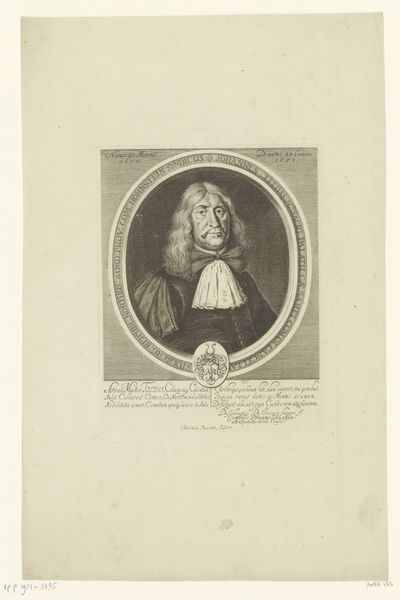
print, engraving
#
portrait
# print
#
old engraving style
#
figuration
#
11_renaissance
#
northern-renaissance
#
engraving
Dimensions: height 300 mm, width 228 mm
Copyright: Rijks Museum: Open Domain
Curator: Today we’re looking at "Portret van een onbekende man met plooikraag"—or "Portrait of an Unknown Man with a Millstone Collar." It’s an engraving done sometime between 1873 and 1909 by Florent Brant. Editor: My first impression is that the work feels both rigid and softened somehow. The man’s dark jacket and severe expression contrast so strongly with the ruffled delicacy of the collar. There’s tension in that juxtaposition. Curator: Exactly. Note how Brant employs the engraving technique. The meticulously etched lines define the form, constructing volume and texture with remarkable precision. Observe, too, how the stippling softens the light across his brow, playing against the crispness of the collar’s spiraling edges. Editor: Which can speak to constructed power during the Renaissance. I am struck by the contrast between this unknown man’s imposing posture, reflective of social status, and the anonymity that history has imposed upon him. Was he complicit within systems of power, and what does it mean to have that authority erased? Curator: We can analyze the semiotic components of the portrait; the ruff collar acts almost as a halo, and speaks volumes. And note how Brant handles light—there's a masterful gradation moving from face to collar, creating an almost tangible depth. Editor: Thinking about the act of representation itself, particularly in the 19th century when this print was made…Who chose to commemorate this historical figure, and why? We might also want to explore the tradition of portraiture within colonial legacies—especially concerning power imbalances related to who gets to be seen and remembered. Curator: It’s interesting you bring that up because when we break it down formally, the engraving operates on multiple layers; it is simultaneously a flat plane and a deep space. This invites us to question our understanding of reality. Editor: Reflecting on this "unknown man," I’m reminded that archives are never neutral, always selective. This piece encourages critical engagement with the narratives of identity that the past produces—narratives in which not everyone has equal say. Curator: A wonderfully incisive remark! I find that, even at the formal level, this print creates questions more readily than it answers them.
Comments
No comments
Be the first to comment and join the conversation on the ultimate creative platform.
